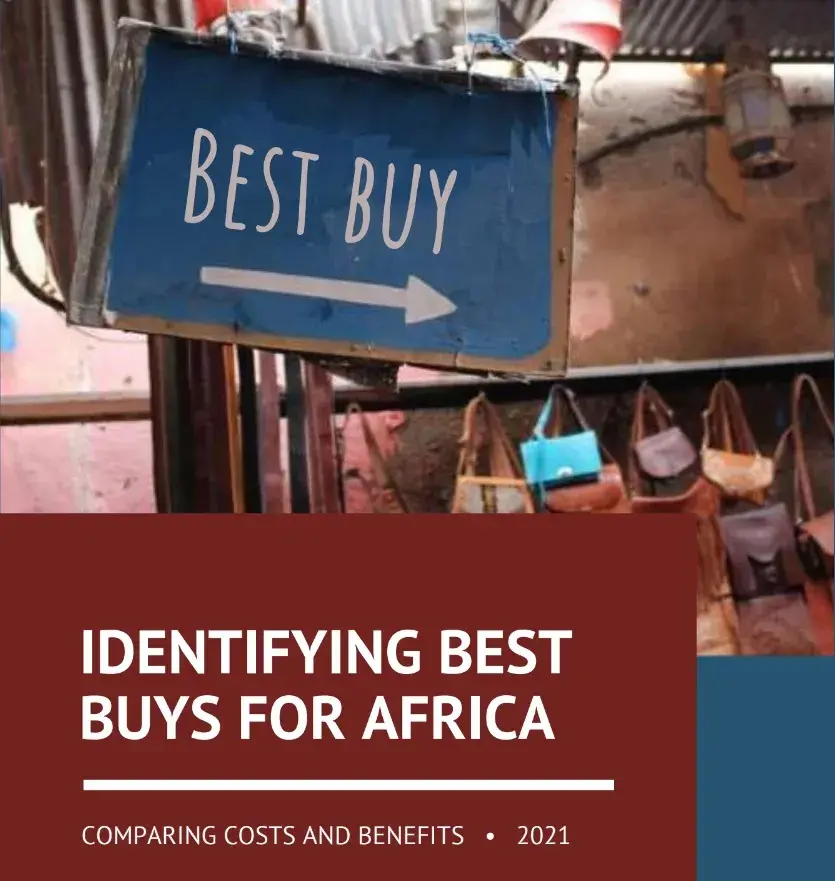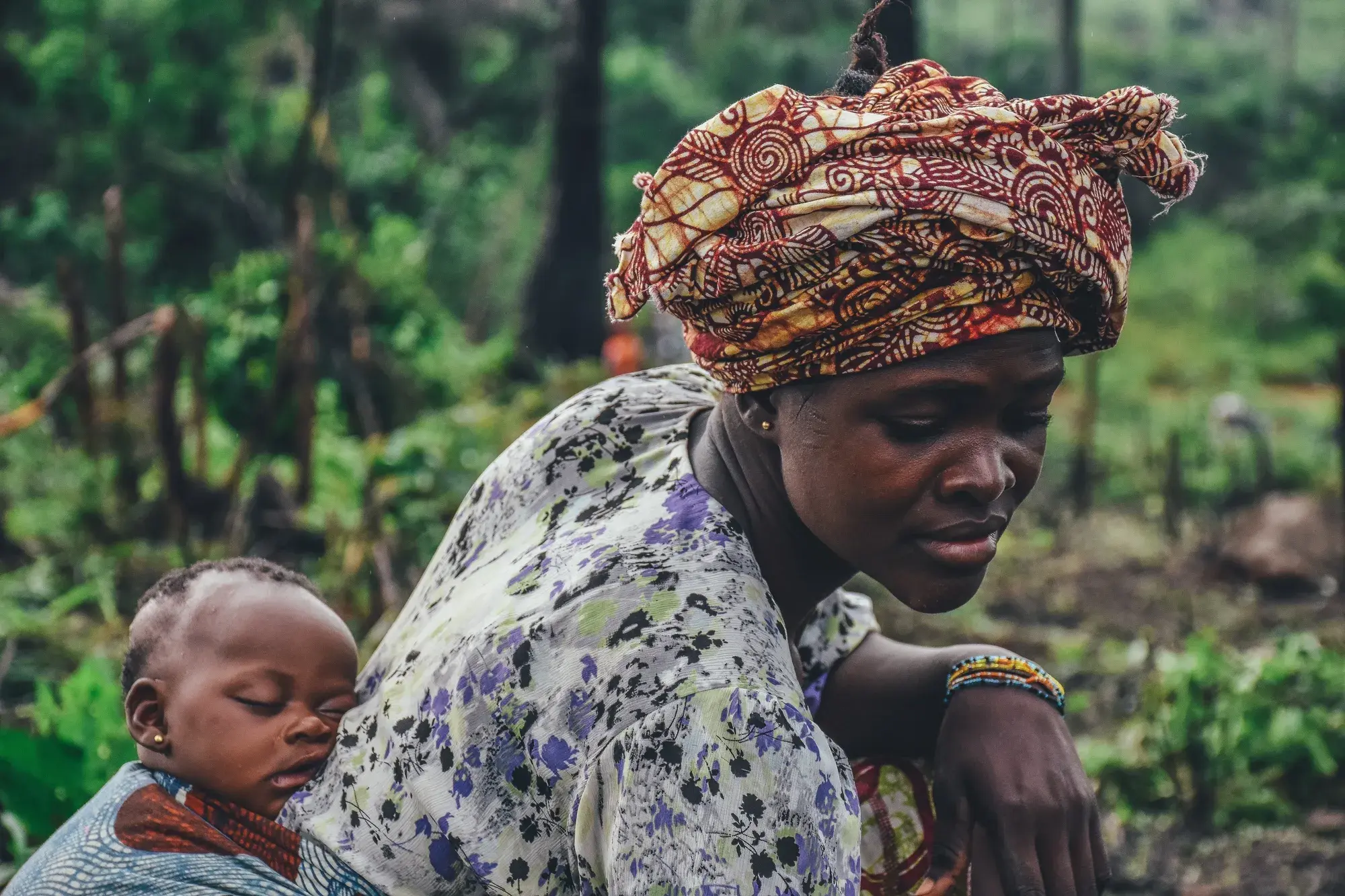Best Buys for Africa
Best Buys for Africa
No nation can tackle all problems at once. Resources are limited, including money, time, manpower and attention. Hence, it might make sense to first focus where the used resources can achieve the highest impacts on welfare.
This work has been produced as a part of the project Prioritizing best buys for development across the African continent by the Copenhagen Consensus. This report gives African nations a first glimpse of where extra money can be best spent first. It is a fast-track analysis of some of the best policies across the continent, analyzed in time for the Grand Challenges Summit in Addis Ababa 27-30 October.
What are “best policies”?
This publication aims to identify some of the best policies for Africa. Some of these policies can readily be implemented or scaled up with existing technology. These policies are outlined in this section of the report.
Other policies are good candidates for investment in R&D to develop new technologies that can make deployment much more feasible. These policies are described in the second section of this report.
For both sets of policies, this report uses social cost-benefit analysis to find the best policies. For any policy, we estimate the total costs.
Much of this will be monetary costs — for vaccinations, it might include vaccines, extra health care staff and overhead. It will also include social and environmental costs, such as transport costs and time spent, that could otherwise have been used for wage work. All costs are converted into monetary terms through well-established, economic procedures.
Similarly, we estimate total benefits. These can be economic, social and environmental. For vaccines, they will mostly consist of the benefits from avoided premature death. For other policies for example within education the benefits consist of increased productivity, for trade facilitation the benefits are primarily increased economic activity. Again, all benefits are converted into monetary terms.

If this analysis has included all major costs and benefits of the policy and translated them well into monetary terms, we can now show the effectiveness of that policy using the benefit-cost ratio: That for each dollar spent, it will produce, say, 10 dollars of social welfare.
While the report uses US$ for costs and benefits, the analysis can effortlessly be used for any other currency. If a policy spends $1 to produce $10 of social welfare, the policy spends one shilling (or naira, rand or franc) to produce 10 shillings (or nairas, rands or francs) of social welfare.
This analysis makes it possible to compare and rank policies: some policies produce $5 of social welfare for every dollar spent, some policies produce $50 of social welfare. Indeed, some will be ineffective and produce less than a dollar of social welfare for every dollar spent. All other things equal, the policies producing high returns should be funded before the ones with low return.
All policies are additional: the report looks at the added benefit of the next dollar spent. The analysis does not look at past spending, but help policy makers today, making a decision on spending across a number of different policies.
Best, good, fair and poor policies
The policies have been placed in one of four traffic light signal categories. The best policies all yield more than 15 times their costs in social, economic and environmental benefits (BCR over 15). Good policies generate benefits worth 5 to 15 times more than the expenses (BCR 5-15). Fair policies return the same up to the five-fold amount invested (BCR 1 to 5), and for poor policies the costs exceed the benefits (BCR lower than 1).

Best buys
Nine best buys were identified for Africa by scaling up existing technology. An extra investment in any of these policies would create social and economic benefits worth at least 15 times more.
- Family Planning
- Women’s Empowerment Collectives
- R&D for agricultural yield increase
- Vaccination against rotavirus
- Preschool education
- Tobacco control
- Trade Facilitation in the ACFTA
- Expanded malaria interventions
- Breastfeeding promotion

Good buys
Seven good buys were identified for Africa by scaling up existing technology. An extra investment in any of these policies would create social and economic benefits worth 5 to 15 times more
- Reduced child malnutrition
- Improved cookstoves
- Soil fertility management from cell phone
- Voluntary medical male circumcision for HIV
- Delayed pregnancy among school-girls
- Expansion of Marine Protected Areas
- Rural improved access to clean water

Fair and poor buys
Ten fair buys and one poor buy were identified. An extra investment in any of the fair policies would create social and economic benefits worth 1 to 5 times more. For the poor buy the costs exceed the benefits.
- Community Health Workers (CHWs) for tuberculosis control
- Improved child cancer treatment
- Urban improved access to clean water
- Resilience to drought
- SME training
- Solar energy for unreliable urban grids
- CHWs for hypertension control
- Graduation from ultra-poverty
- Community-Led Total Sanitation
- High Speed Train Network
- Off-Grid Rural Electrification



